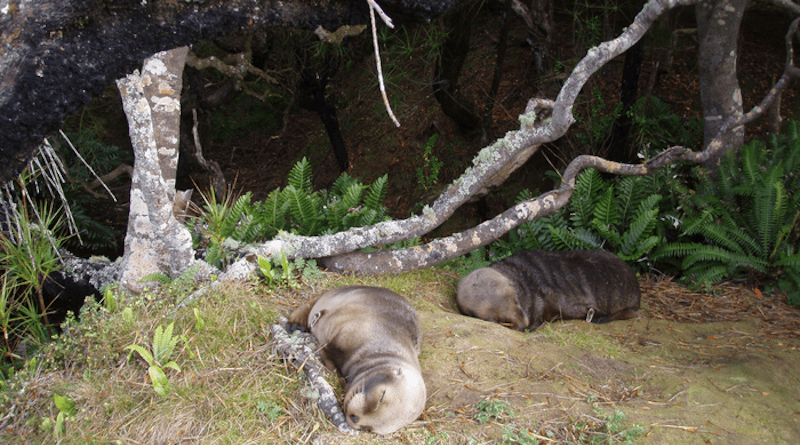New Models Help Welcome World’s Rarest Sea Lion As They Return Home
Dr. Jan O. Engler, a post-doctorate at Chair for Computational Landscape Ecology at Technische Universität Dresden, joined an international team of ecologists and conservationists to map suitable habitats for these endangered New Zealand sea lions and help managers welcome them home. Led by Michigan State University PhD student Veronica Frans, the work, published in this month’s issue of Methods in Ecology and Evolution.
The Integrated Species Distribution Model Database (iSDMdb), developed by Frans, Engler, and colleagues, is an informative map that assists managers in finding these potential locations in the breeding season, but also helps with another complication: humans.
The sea lions’ unique behaviors make conservation efforts for them a little more complicated. Breeding female New Zealand sea lions are the only sea lions on the planet that you can find up to 2 km away from the coast, in forests. While you can still find them on the beach when pups are first born, these moms bring their pups inland to protect them from wind, storms, and being bothered by young males. As their populations are returning, “it’s one thing for wildlife rangers to look out for sea lions on sandy beaches, but it’s another challenge for them to tromp through forests to find baby sea lions hiding under the trees,” said Frans. “While we can’t know for sure where female sea lions will go on the mainland, we can use models to make helpful predictions.”
While finding sea lion pups in forests may sound like a treat, sea lion moms are actually quite protective of their pups, and encounters can be dangerous for both the sea lions and people. They have been hit by cars and killed deliberately. They have also had bad encounters with pets, been found snoozing at children’s parks or enjoying a local swimming pool, and have given birth in people’s back yards. Fences, roads, and residential areas can also be barriers as moms try to move their pups into the forests.
By working closely with managers, rangers, and decision-makers at the New Zealand Department of Conservation, this new database helps address these concerns for future conservation planning and community outreach. The database takes the form of an interactive map that is available to the public to be used to identify potential hazards and explore new habitats to make way for these sea lions as they return home.
“This project not only has great management applications for the sea lions, but it also demonstrates that complicated models really can be translated into real-world use,” says Dr. Engler, senior author of this study. “Scientists have been saying for years that these species distribution models need an upgrade for conservationists, and this work is a successful example of how that can be done.”

